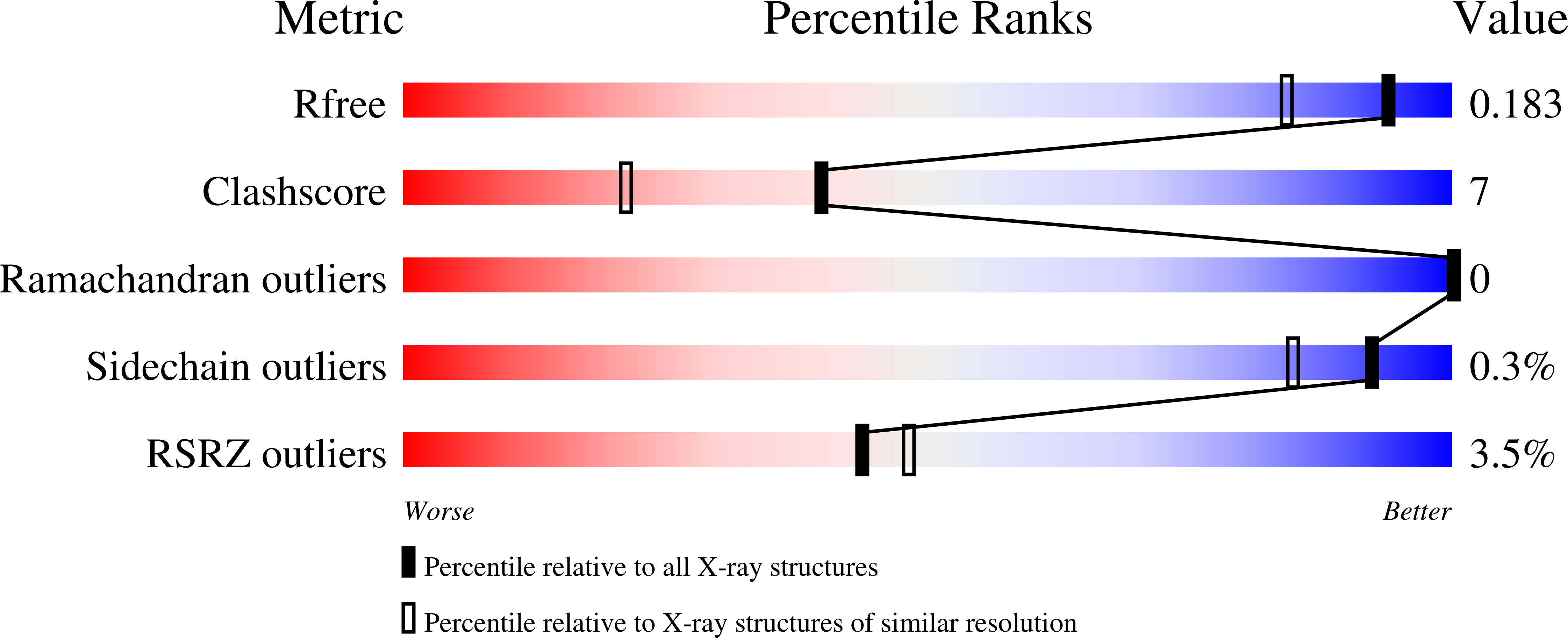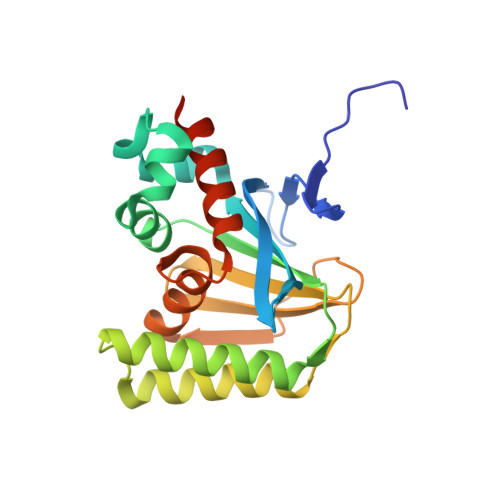Evolution of chalcone isomerase from a noncatalytic ancestor.
Kaltenbach, M., Burke, J.R., Dindo, M., Pabis, A., Munsberg, F.S., Rabin, A., Kamerlin, S.C.L., Noel, J.P., Tawfik, D.S.(2018) Nat Chem Biol 14: 548-555
- PubMed: 29686356
- DOI: https://doi.org/10.1038/s41589-018-0042-3
- Primary Citation of Related Structures:
5WKR, 5WKS, 5WL3, 5WL4, 5WL5, 5WL6, 5WL7, 5WL8 - PubMed Abstract:
The emergence of catalysis in a noncatalytic protein scaffold is a rare, unexplored event. Chalcone isomerase (CHI), a key enzyme in plant flavonoid biosynthesis, is presumed to have evolved from a nonenzymatic ancestor related to the widely distributed fatty-acid binding proteins (FAPs) and a plant protein family with no isomerase activity (CHILs). Ancestral inference supported the evolution of CHI from a protein lacking isomerase activity. Further, we identified four alternative founder mutations, i.e., mutations that individually instated activity, including a mutation that is not phylogenetically traceable. Despite strong epistasis in other cases of protein evolution, CHI's laboratory reconstructed mutational trajectory shows weak epistasis. Thus, enantioselective CHI activity could readily emerge despite a catalytically inactive starting point. Accordingly, X-ray crystallography, NMR, and molecular dynamics simulations reveal reshaping of the active site toward a productive substrate-binding mode and repositioning of the catalytic arginine that was inherited from the ancestral fatty-acid binding proteins.
Organizational Affiliation:
Department of Biological Chemistry, The Weizmann Institute of Science, Rehovot, Israel.

















